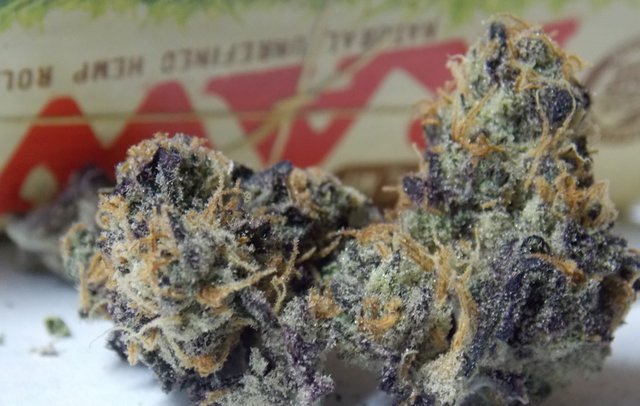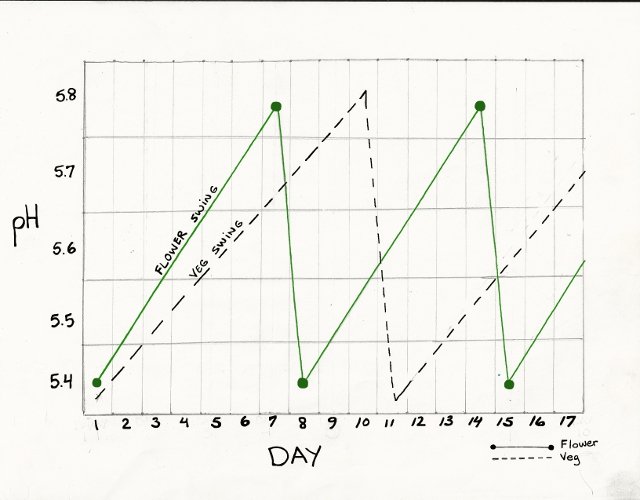Lazy Man's Reservoir Managment for Smashing Success (OR Why Hydroponics Is Nowhere Near as Complicated as You Think)
Basics of Hydroponic Cannabis
Looking online for information on hydroponics and cannabis is sooo confusing. This will be verry simple in comparison. I say hydroponics, when done correctly, is simple and takes little time. I had planned on making this a 2-part series and ended up just writing the full length post. Now that the firefox issue is fixed, I'll be able to edit and reply as normal.) Yaaay!
Reservoir Management is the Key to Saving Time
The difference is in the reservoir management. Regardless of the system used, a few key points make management easier. When each of these conditions are met, the time you spend working with your hydro system drops dramatically. This leaves you more time for working with the plants or other tasks in life. I learned these methods over 15 years ago and they've served me extremely well.
The following information works best in a high VPD environment. I use low temperatures and high humidity, others use high heat, high humidity. I believe low humidity produces higher quality, while high heat and humidity is easier/cheaper to maintain. Low humidity also has significantly lower pest breeding and mold germination rates.
Building Blocks for Any Hydro System
The following are a few key points for all hydroponic systems.
Clean Water
You want easy hydro? You'll definitely want to always use clean water. I prefer reverse osmosis filtered water. R/O is pH neutral and free of contaminants. Everything cannabis needs will be supplied by your nutrient mix. No guessing.
A Balanced Nutrient Profile
Providing an accurate mix of elements, required by a plant, allows maximum healthy growth rates. A properly balanced mix will have sufficient levels of each macro and micro element, without having excess within a healthy pH range. Cannabis can and does bind some elements directly to cell walls in new growth. A balanced nutrient profile produces the cleanest end cannabis through prevention of this action.
Professional/Pharmaceutical Grade Nutrients
The cleaner the nutrients, the fewer problems and potential contaminates you have to deal with. I recommend using only pharmaceutical grade nutrients for cannabis. 99.9% free of contaminants.
pH Swing Compatible Additives
Using the natural upswing in pH, as the plants absorb nutrients, is the cleanest way to achieve a full and cyclic pH swing. Additives that alter pH, either directly or though biological activity, must be carefully used.
Roots-In and Roots-Out
Though the basics are the same, there are two general types of hydroponic systems. Roots-in, where the roots are constantly exposed to the nutrient solution, and roots-out, where the roots experience repeated drying out periods. The pH management and correct root zone temperatures are different for each type. Roots-In systems also require oxygenation of the nutrient solution.
Roots-In
Roots-in systems MUST keep the root zone (nutrient solution) between 65F and 68F. Higher or lower temperatures increase work and decrease results. 68F is preferred for maximum growth rates.
A full and cyclic pH swing from 5.4-5.8 MUST be allowed to happen in the reservoir. Allowed, through proper res management, not forced.
Roots-in systems constantly bathe the roots in solution. Since these roots require oxygen, the solution must be sufficiently oxygenated. This is accomplised with airpumps, airlines and airstones. A good rule of thumb is to provide at least 3 watts of airpump power for each 10 gallons of nutrient solution.
Roots-Out
Roots-out systems MUST keep the root zone at 75F-78F, for healthy growth. Temperatures below 75F stall growth and temps above 78F invite root rot.
The healthy pH swing in a roots-out system is a narrower range than roots-in systems. This is due to the pH dropping in the root zone, as it dries out between waterings. The healthy pH range for a roots out system is generally 5.5-5.8.
Reservoir Size and pH Swing
Cannabis responds to a healthy pH swing in the root zone. Cannais responds extremely well to a swing with a 7-10 day cycle. Since the swing is largely based on how fast plants absorb nutrients, a reservoir size needs to be matched to the light and number of plants being used.
The more gallons of nutrients in the reservoir, the longer it will take for the pH to swing. The fewer gallons, the quicker the swing. The standard size for a 1000w HID and a full canopy is 40-45 gallons.
Mixing Your Nutrient Solution
Mixing the nutrient solution is a simple process. Filling the reservoir with water. Adding nutrients, mixing well, adding additives, if any, and adjusting the initial pH.
Add r/o water
Fill the reservoir to the level you're going to use.
Add Nutrients and Additives (if any)
Add your base nutrients in the order your manufacturer recommends. I use a general mix which works well as a general nutrient for 'cannabis,' consisting of 8ml/cc of GH Flora Micro and 16ml/cc of GH Flora Bloom, per gallon of water. (Yes, commonly referred to as the Lucas Formula)
This means I calculate the number of cc/ml's of micro I need and mix it in thoroughly. I then mix in the calculated amount of bloom. Additives are added next. The main additive I always use with Lucas is .5/1g of epsom salts (magnesium sulfate) per gallon.
pH to Lowest Starting pH Level
The starting pH is going to be different for roots-in and roots-out system. I use GH powdered pH up as it works well and is a potassium based product. Roots-in systems are simple at 5.4. Roots-out systems are generally 5.5, depending on the pH drop between waterings.
Daily Reservoir Management
All hydroponic systems require daily tending. It takes only a few minutes to do the following.
- Measure Transpiration Rate
- Top off the Reservoir
- Check the PPM/pH
- Add Nutrient (If necessary)
Measure Transpiration Rate
Once a day, look at the level of the nutrient solution, to see how much has been transpired/evaporated. Watching changes in this rate is an important piece of information regarding your plants. The lower the level in the reservoir, the more water is being transpired and evaporated.
Top Off the Reservoir
Easiest part of the day, add r/o water until the reservoir is re-filled. With automated float valve systems, I lose the transpiration info and the slight pH dip, without adding a way to calculate added gallons and possibly a timer on the fill valve.
Measure pH and PPM/EC/TDS
Once the reservoir is topped off to initial volume, check the pH and ppm/ec/tds. Write these numbers down to chart the progress of the reservoir.
Add Nutrients
When the pH hits 5.8, add nutrients. The nutrients act as a pH down. You'll add enough nutrients to return to your 5.4 or 5.5 starting point.
When Transpiration Slows
This is the point in flower when the plant begins moving from growing larger flowers to producing more oil. You'll notice the plants are not using as much solution, the level in the reservoir isn't as low each day.
Cut back on the amount of nutrients you add or pump out some solution and replace it with r/o water.
The goal is to match the previous transpiration rate.
Those are the Basics
This is the essence of lazy man's hydroponics. Setup is straightforward, daily management is quick and simple, results are smashing.
When Do You Dump the Reservoir?
5 days before harvest, pump that (should be) fairly weak solution out into the garden or on the lawn or flower beds outdoor. Replace the solution with r/o water.
When you start with r/o water and use only clean nutrients and compatible additives, your pH swing is natural and complete and your reservoir stays clean. There is no need to dump a perfectly healthy reservoir, other than before harvest.